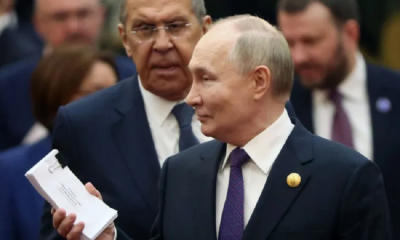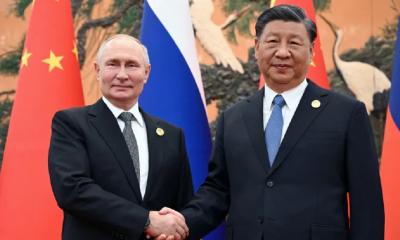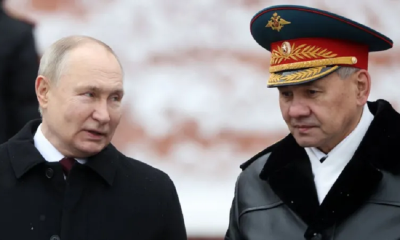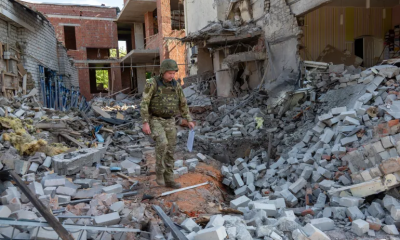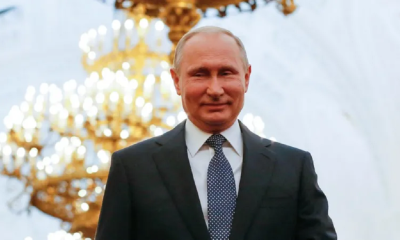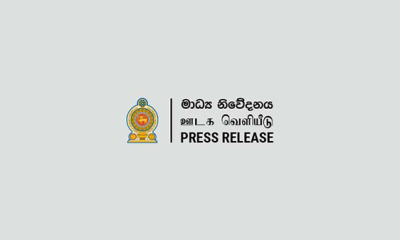Features
Russia after Wagnar Mutiny: Putin’s Politics Redefined
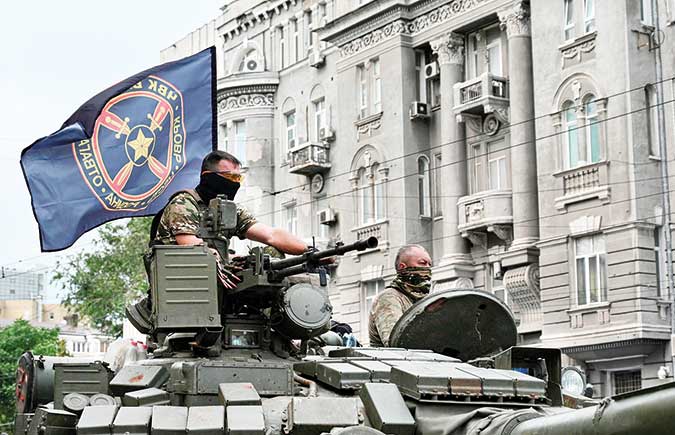
by Nilantha Ilangamuwa
The Gang of Eight in the US was thrilled, expecting a larger spectacle in the Western alliance’s fight against Russia. The CIA, with whom Ukrainian President Zelenskyy shared everything, assured a heavy bloodbath in Moscow. Alas, the inflated balloon unexpectedly burst, leaving their hope in tatters. But, the West’s lost dream does not mean Russia is a success.
As Alexander Dugin pointed out, “clouds begin to thicken again.” Russia has been shaken, prompting Russians and the Putin administration to rethink and redefine their approach. The so-called Wagner mutiny has exposed the hollowness of the narrative fallacies propagated by the West and its corporate media, which contains blatant falsehoods about perceived enemies of the West.
This is not the first time that mainstream Western media has attempted to exploit such incidents to tarnish designated enemies in an unsightly manner. Are you aware of the infamous Ukrainian figure Stepan Bandera, widely known as a Nazi collaborator responsible for the deaths of over a hundred thousand Jews and Poles, and his followers, such as Mykola Lebed, who deeply collaborated with the CIA to undermine the Soviet Union in Ukraine? Declassified government reports have revealed that Ukraine has served as a staging ground for the U.S. to weaken and threaten Moscow for nearly 80 years.
In 1997, Zbigniew Brzezinski, former U.S. national security adviser, emphasized the significance of Ukraine as a new and important space on the Eurasian chessboard. Did you know that Vladimir Putin, as the newly elected leader of the Russian Federation, officially requested to join NATO in 2000, but the Clinton administration vehemently refused?
More recently, in December 2022, former German Chancellor Angela Merkel admitted that the West never intended to push for the implementation of the Minsk agreements and instead used them as a pretext to buy time for NATO to arm and train the Ukrainian armed forces. Shortly after the outbreak of the war, Russia and Ukraine reached a framework agreement to end the conflict, with Ukraine pledging not to join NATO. However, the objections of the U.S. and U.K. prevented its implementation. Subsequently, we witnessed the so-called 36-hour mutiny, led by Wagner, which perhaps stands as the shortest armed mutiny in Russian history.
However, the Western narratives not only failed miserably but also further damaged their own reputation. The inconsistent stances of the US administration regarding this mutiny from the outset indicate a lack of understanding of Russia’s socio-political reality. Despite this, US companies have capitalized on the conflict, holding Ukraine hostage, while Europe has endured unprecedented destruction.
It is crucial for the opposing parties to accurately grasp the geopolitical dynamics of Russia, as Europe needs Russia. Russia is the largest state in the world, spanning 17.1 million square kilometers across eleven time zones. It has been led by the same leader for 23 years and boasts the world’s fifth-largest military, with 1.15 million active-duty troops and at least two million reserve personnel.
Contrary to the analysis presented by Western media, the head of the Wagner private military company, who challenged several high-ranking officials of the Russian army, along with approximately two thousand supporters, had no intention of invading Moscow, overthrowing President Putin, or plunging Russia into civil war. Even disregarding the facts, a basic understanding of mathematics would debunk these false interpretations. However, for the stubborn, egocentric hyper-minds, true comprehension remains elusive, with truth always serving as their archenemy.
Yevgeny Prigozhin, the head of Wagner’s company, is a self-proclaimed general skilled at perpetuating small lies to facilitate grand scams. His primary objective is to maximize profit, not govern Russia. He never opposed President Putin or the administration as a whole. A closer examination of his messages, assuming their authenticity, reveals that his public protest stems from a dispute with Defense Minister Sergei Shoigu. This crisis has been developing internally for years since Shoigu objected to awarding certain military contracts to Wagner.
This so-called mutiny may be an unintended consequence of a private military unit receiving more preferential treatment than the regular army during operations. Alternatively, it could be the result of conflicts arising from the substantial funding—over one billion dollars—allocated to Wagner by the central government in just one year. Prigozhin is a businessman who has amassed significant wealth through his private army. According to reports, his declared personal wealth is US$1.5 billion and continues to flourish.
Putin’s decisive response showcases his strong leadership, prioritizing the state’s structure over personal ties. Upholding the state’s institutions, Putin safeguards Russian society and recognizes their crucial role in his leadership.
Another intriguing observation is Prigozhin’s endorsement of President Alexander Lukashenko’s proposals. President Lukashenko is widely recognized as one of President Putin’s most trusted politicians. This raises the question of what motivated Prigozhin to place his trust in Lukashenko and choose Belarus as a retreat. It remains to be seen whether Wagner utilized the mercenary army to strengthen Lukashenko’s position, as he faces political instability. Only time will provide the answer to this question.
This agreement raises doubts about whether the incidents in Russia over the past weekend were orchestrated as part of a carefully planned drama. If so, even individuals with basic knowledge of military operations and strategies have doubts about whether the strengthening of the Belarusian-Ukrainian border, which stretches approximately 1,084 km, was in preparation for a decisive military operation in the future. As the Chinese military strategist Sun Tzu stated in his book “The Art of War,” ‘all warfare is based on deception. Hence, when we are able to attack, we must seem unable; when using our forces, we must appear inactive; when we are near, we must make the enemy believe we are far away; when far away, we must make him believe we are near.’ Putin may have grasped this strategy long ago during his time in the KGB.
However, the Wagner ‘mutiny’ raises a significant social issue: the potential social divide that can arise when private military companies challenge the state’s legitimate military forces. This issue is particularly important for the future of the region, as the Ukraine-Russia war has transformed into a conflict between two ideologically distinct worlds rather than two countries.
The Wagner incident sheds light on the Russian people and their social opinions. While the Wagner mercenary army undeniably maintains a level of popularity, it is important to note that the company heavily invests in PR campaigns and utilizes troll farms to bolster its image. Meanwhile, Russia’s invasion has proven to be more protracted than initially anticipated. But, historical precedent shows that Russians have endured prolonged wars before, albeit reluctantly.
Despite this, a formidable political alternative capable of challenging Putin’s leadership has yet to emerge. Western countries have made attempts to create viable alternatives since 1991, but their lack of understanding of Russian society has hindered their success. Destabilizing Russia’s internal structures can weaken its strength, a fact that former KGB operative Putin is well aware of. To dismantle Putin’s administration, one must employ individuals with a profound understanding of his character. Thus, when Prigozhin voiced his protest, Western countries and their pro-Ukraine media hailed him as a hero.
Whether the Wagner mutiny is factual or merely a scene from a drama, it highlights the challenges faced by states that rely on private armies. Two years prior to President Putin’s military operations in Ukraine, Eric Prince, the former head of the US mercenary company previously known as Blackwater (later renamed Xe Services and then Academi in 2011), held a meeting with top officials of Ukrainian President Zelensky on February 23, 2020. During this meeting, Prince proposed that his private army was ready to engage in war against Russia.
Eric’s mercenary army first gained public attention during the US invasion of Iraq, has been involved in operations across various regions, including Africa. Although Eric Prince’s mission in Ukraine failed, there are other private military companies actively involved in conflicts against Russia. Reports suggest that officers in these companies can earn as little as two thousand US dollars per day, highlighting the lucrative nature of such operations.
However, the detrimental impact of maintaining private armies on official state forces should not be underestimated. In response, the United Nations adopted the International Convention Against the Recruitment, Use, Financing, and Training of Mercenaries on December 4, 1989, which came into force on October 20, 2001. It is worth noting that some of the world’s largest and most powerful armies, including those of the United States, Russia, China, France, and the United Kingdom, have not ratified this convention. This inconsistency raises questions about the true stance of these countries on the use of mercenaries and private military companies.
In March 2024, Russia will hold its presidential elections, eight months ahead of the US race. It will be President Putin’s first election since the 2020 constitutional amendment. The upcoming winter holds immense significance for all parties involved and may determine the outcome of the war. The impact of his invasion of Ukraine and the presence of mercenary forces throughout his tenure will undoubtedly shape the presidential election’s outcome, a crucial task in times of war. Whether the Wagner incident is genuine or orchestrated, it has given President Putin’s politics a new dimension. As one of Russia’s longest-serving leaders, Putin faces a critical juncture, and the choices he makes will undoubtedly shape the future, for better or worse.
Features
The heart-friendly health minister

by Dr Gotabhya Ranasinghe
Senior Consultant Cardiologist
National Hospital Sri Lanka
When we sought a meeting with Hon Dr. Ramesh Pathirana, Minister of Health, he graciously cleared his busy schedule to accommodate us. Renowned for his attentive listening and deep understanding, Minister Pathirana is dedicated to advancing the health sector. His openness and transparency exemplify the qualities of an exemplary politician and minister.
Dr. Palitha Mahipala, the current Health Secretary, demonstrates both commendable enthusiasm and unwavering support. This combination of attributes makes him a highly compatible colleague for the esteemed Minister of Health.
Our discussion centered on a project that has been in the works for the past 30 years, one that no other minister had managed to advance.
Minister Pathirana, however, recognized the project’s significance and its potential to revolutionize care for heart patients.
The project involves the construction of a state-of-the-art facility at the premises of the National Hospital Colombo. The project’s location within the premises of the National Hospital underscores its importance and relevance to the healthcare infrastructure of the nation.
This facility will include a cardiology building and a tertiary care center, equipped with the latest technology to handle and treat all types of heart-related conditions and surgeries.
Securing funding was a major milestone for this initiative. Minister Pathirana successfully obtained approval for a $40 billion loan from the Asian Development Bank. With the funding in place, the foundation stone is scheduled to be laid in September this year, and construction will begin in January 2025.
This project guarantees a consistent and uninterrupted supply of stents and related medications for heart patients. As a result, patients will have timely access to essential medical supplies during their treatment and recovery. By securing these critical resources, the project aims to enhance patient outcomes, minimize treatment delays, and maintain the highest standards of cardiac care.
Upon its fruition, this monumental building will serve as a beacon of hope and healing, symbolizing the unwavering dedication to improving patient outcomes and fostering a healthier society.We anticipate a future marked by significant progress and positive outcomes in Sri Lanka’s cardiovascular treatment landscape within the foreseeable timeframe.
Features
A LOVING TRIBUTE TO JESUIT FR. ALOYSIUS PIERIS ON HIS 90th BIRTHDAY

by Fr. Emmanuel Fernando, OMI
Jesuit Fr. Aloysius Pieris (affectionately called Fr. Aloy) celebrated his 90th birthday on April 9, 2024 and I, as the editor of our Oblate Journal, THE MISSIONARY OBLATE had gone to press by that time. Immediately I decided to publish an article, appreciating the untiring selfless services he continues to offer for inter-Faith dialogue, the renewal of the Catholic Church, his concern for the poor and the suffering Sri Lankan masses and to me, the present writer.
It was in 1988, when I was appointed Director of the Oblate Scholastics at Ampitiya by the then Oblate Provincial Fr. Anselm Silva, that I came to know Fr. Aloy more closely. Knowing well his expertise in matters spiritual, theological, Indological and pastoral, and with the collaborative spirit of my companion-formators, our Oblate Scholastics were sent to Tulana, the Research and Encounter Centre, Kelaniya, of which he is the Founder-Director, for ‘exposure-programmes’ on matters spiritual, biblical, theological and pastoral. Some of these dimensions according to my view and that of my companion-formators, were not available at the National Seminary, Ampitiya.
Ever since that time, our Oblate formators/ accompaniers at the Oblate Scholasticate, Ampitiya , have continued to send our Oblate Scholastics to Tulana Centre for deepening their insights and convictions regarding matters needed to serve the people in today’s context. Fr. Aloy also had tried very enthusiastically with the Oblate team headed by Frs. Oswald Firth and Clement Waidyasekara to begin a Theologate, directed by the Religious Congregations in Sri Lanka, for the contextual formation/ accompaniment of their members. It should very well be a desired goal of the Leaders / Provincials of the Religious Congregations.
Besides being a formator/accompanier at the Oblate Scholasticate, I was entrusted also with the task of editing and publishing our Oblate journal, ‘The Missionary Oblate’. To maintain the quality of the journal I continue to depend on Fr. Aloy for his thought-provoking and stimulating articles on Biblical Spirituality, Biblical Theology and Ecclesiology. I am very grateful to him for his generous assistance. Of late, his writings on renewal of the Church, initiated by Pope St. John XX111 and continued by Pope Francis through the Synodal path, published in our Oblate journal, enable our readers to focus their attention also on the needed renewal in the Catholic Church in Sri Lanka. Fr. Aloy appreciated very much the Synodal path adopted by the Jesuit Pope Francis for the renewal of the Church, rooted very much on prayerful discernment. In my Religious and presbyteral life, Fr.Aloy continues to be my spiritual animator / guide and ongoing formator / acccompanier.
Fr. Aloysius Pieris, BA Hons (Lond), LPh (SHC, India), STL (PFT, Naples), PhD (SLU/VC), ThD (Tilburg), D.Ltt (KU), has been one of the eminent Asian theologians well recognized internationally and one who has lectured and held visiting chairs in many universities both in the West and in the East. Many members of Religious Congregations from Asian countries have benefited from his lectures and guidance in the East Asian Pastoral Institute (EAPI) in Manila, Philippines. He had been a Theologian consulted by the Federation of Asian Bishops’ Conferences for many years. During his professorship at the Gregorian University in Rome, he was called to be a member of a special group of advisers on other religions consulted by Pope Paul VI.
Fr. Aloy is the author of more than 30 books and well over 500 Research Papers. Some of his books and articles have been translated and published in several countries. Among those books, one can find the following: 1) The Genesis of an Asian Theology of Liberation (An Autobiographical Excursus on the Art of Theologising in Asia, 2) An Asian Theology of Liberation, 3) Providential Timeliness of Vatican 11 (a long-overdue halt to a scandalous millennium, 4) Give Vatican 11 a chance, 5) Leadership in the Church, 6) Relishing our faith in working for justice (Themes for study and discussion), 7) A Message meant mainly, not exclusively for Jesuits (Background information necessary for helping Francis renew the Church), 8) Lent in Lanka (Reflections and Resolutions, 9) Love meets wisdom (A Christian Experience of Buddhism, 10) Fire and Water 11) God’s Reign for God’s poor, 12) Our Unhiddden Agenda (How we Jesuits work, pray and form our men). He is also the Editor of two journals, Vagdevi, Journal of Religious Reflection and Dialogue, New Series.
Fr. Aloy has a BA in Pali and Sanskrit from the University of London and a Ph.D in Buddhist Philosophy from the University of Sri Lankan, Vidyodaya Campus. On Nov. 23, 2019, he was awarded the prestigious honorary Doctorate of Literature (D.Litt) by the Chancellor of the University of Kelaniya, the Most Venerable Welamitiyawe Dharmakirthi Sri Kusala Dhamma Thera.
Fr. Aloy continues to be a promoter of Gospel values and virtues. Justice as a constitutive dimension of love and social concern for the downtrodden masses are very much noted in his life and work. He had very much appreciated the commitment of the late Fr. Joseph (Joe) Fernando, the National Director of the Social and Economic Centre (SEDEC) for the poor.
In Sri Lanka, a few religious Congregations – the Good Shepherd Sisters, the Christian Brothers, the Marist Brothers and the Oblates – have invited him to animate their members especially during their Provincial Congresses, Chapters and International Conferences. The mainline Christian Churches also have sought his advice and followed his seminars. I, for one, regret very much, that the Sri Lankan authorities of the Catholic Church –today’s Hierarchy—- have not sought Fr.
Aloy’s expertise for the renewal of the Catholic Church in Sri Lanka and thus have not benefited from the immense store of wisdom and insight that he can offer to our local Church while the Sri Lankan bishops who governed the Catholic church in the immediate aftermath of the Second Vatican Council (Edmund Fernando OMI, Anthony de Saram, Leo Nanayakkara OSB, Frank Marcus Fernando, Paul Perera,) visited him and consulted him on many matters. Among the Tamil Bishops, Bishop Rayappu Joseph was keeping close contact with him and Bishop J. Deogupillai hosted him and his team visiting him after the horrible Black July massacre of Tamils.
Features
A fairy tale, success or debacle

Sri Lanka-Singapore Free Trade Agreement
By Gomi Senadhira
senadhiragomi@gmail.com
“You might tell fairy tales, but the progress of a country cannot be achieved through such narratives. A country cannot be developed by making false promises. The country moved backward because of the electoral promises made by political parties throughout time. We have witnessed that the ultimate result of this is the country becoming bankrupt. Unfortunately, many segments of the population have not come to realize this yet.” – President Ranil Wickremesinghe, 2024 Budget speech
Any Sri Lankan would agree with the above words of President Wickremesinghe on the false promises our politicians and officials make and the fairy tales they narrate which bankrupted this country. So, to understand this, let’s look at one such fairy tale with lots of false promises; Ranil Wickremesinghe’s greatest achievement in the area of international trade and investment promotion during the Yahapalana period, Sri Lanka-Singapore Free Trade Agreement (SLSFTA).
It is appropriate and timely to do it now as Finance Minister Wickremesinghe has just presented to parliament a bill on the National Policy on Economic Transformation which includes the establishment of an Office for International Trade and the Sri Lanka Institute of Economics and International Trade.
Was SLSFTA a “Cleverly negotiated Free Trade Agreement” as stated by the (former) Minister of Development Strategies and International Trade Malik Samarawickrama during the Parliamentary Debate on the SLSFTA in July 2018, or a colossal blunder covered up with lies, false promises, and fairy tales? After SLSFTA was signed there were a number of fairy tales published on this agreement by the Ministry of Development Strategies and International, Institute of Policy Studies, and others.
However, for this article, I would like to limit my comments to the speech by Minister Samarawickrama during the Parliamentary Debate, and the two most important areas in the agreement which were covered up with lies, fairy tales, and false promises, namely: revenue loss for Sri Lanka and Investment from Singapore. On the other important area, “Waste products dumping” I do not want to comment here as I have written extensively on the issue.
1. The revenue loss
During the Parliamentary Debate in July 2018, Minister Samarawickrama stated “…. let me reiterate that this FTA with Singapore has been very cleverly negotiated by us…. The liberalisation programme under this FTA has been carefully designed to have the least impact on domestic industry and revenue collection. We have included all revenue sensitive items in the negative list of items which will not be subject to removal of tariff. Therefore, 97.8% revenue from Customs duty is protected. Our tariff liberalisation will take place over a period of 12-15 years! In fact, the revenue earned through tariffs on goods imported from Singapore last year was Rs. 35 billion.
The revenue loss for over the next 15 years due to the FTA is only Rs. 733 million– which when annualised, on average, is just Rs. 51 million. That is just 0.14% per year! So anyone who claims the Singapore FTA causes revenue loss to the Government cannot do basic arithmetic! Mr. Speaker, in conclusion, I call on my fellow members of this House – don’t mislead the public with baseless criticism that is not grounded in facts. Don’t look at petty politics and use these issues for your own political survival.”
I was surprised to read the minister’s speech because an article published in January 2018 in “The Straits Times“, based on information released by the Singaporean Negotiators stated, “…. With the FTA, tariff savings for Singapore exports are estimated to hit $10 million annually“.
As the annual tariff savings (that is the revenue loss for Sri Lanka) calculated by the Singaporean Negotiators, Singaporean $ 10 million (Sri Lankan rupees 1,200 million in 2018) was way above the rupees’ 733 million revenue loss for 15 years estimated by the Sri Lankan negotiators, it was clear to any observer that one of the parties to the agreement had not done the basic arithmetic!
Six years later, according to a report published by “The Morning” newspaper, speaking at the Committee on Public Finance (COPF) on 7th May 2024, Mr Samarawickrama’s chief trade negotiator K.J. Weerasinghehad had admitted “…. that forecasted revenue loss for the Government of Sri Lanka through the Singapore FTA is Rs. 450 million in 2023 and Rs. 1.3 billion in 2024.”
If these numbers are correct, as tariff liberalisation under the SLSFTA has just started, we will pass Rs 2 billion very soon. Then, the question is how Sri Lanka’s trade negotiators made such a colossal blunder. Didn’t they do their basic arithmetic? If they didn’t know how to do basic arithmetic they should have at least done their basic readings. For example, the headline of the article published in The Straits Times in January 2018 was “Singapore, Sri Lanka sign FTA, annual savings of $10m expected”.
Anyway, as Sri Lanka’s chief negotiator reiterated at the COPF meeting that “…. since 99% of the tariffs in Singapore have zero rates of duty, Sri Lanka has agreed on 80% tariff liberalisation over a period of 15 years while expecting Singapore investments to address the imbalance in trade,” let’s turn towards investment.
Investment from Singapore
In July 2018, speaking during the Parliamentary Debate on the FTA this is what Minister Malik Samarawickrama stated on investment from Singapore, “Already, thanks to this FTA, in just the past two-and-a-half months since the agreement came into effect we have received a proposal from Singapore for investment amounting to $ 14.8 billion in an oil refinery for export of petroleum products. In addition, we have proposals for a steel manufacturing plant for exports ($ 1 billion investment), flour milling plant ($ 50 million), sugar refinery ($ 200 million). This adds up to more than $ 16.05 billion in the pipeline on these projects alone.
And all of these projects will create thousands of more jobs for our people. In principle approval has already been granted by the BOI and the investors are awaiting the release of land the environmental approvals to commence the project.
I request the Opposition and those with vested interests to change their narrow-minded thinking and join us to develop our country. We must always look at what is best for the whole community, not just the few who may oppose. We owe it to our people to courageously take decisions that will change their lives for the better.”
According to the media report I quoted earlier, speaking at the Committee on Public Finance (COPF) Chief Negotiator Weerasinghe has admitted that Sri Lanka was not happy with overall Singapore investments that have come in the past few years in return for the trade liberalisation under the Singapore-Sri Lanka Free Trade Agreement. He has added that between 2021 and 2023 the total investment from Singapore had been around $162 million!
What happened to those projects worth $16 billion negotiated, thanks to the SLSFTA, in just the two-and-a-half months after the agreement came into effect and approved by the BOI? I do not know about the steel manufacturing plant for exports ($ 1 billion investment), flour milling plant ($ 50 million) and sugar refinery ($ 200 million).
However, story of the multibillion-dollar investment in the Petroleum Refinery unfolded in a manner that would qualify it as the best fairy tale with false promises presented by our politicians and the officials, prior to 2019 elections.
Though many Sri Lankans got to know, through the media which repeatedly highlighted a plethora of issues surrounding the project and the questionable credentials of the Singaporean investor, the construction work on the Mirrijiwela Oil Refinery along with the cement factory began on the24th of March 2019 with a bang and Minister Ranil Wickremesinghe and his ministers along with the foreign and local dignitaries laid the foundation stones.
That was few months before the 2019 Presidential elections. Inaugurating the construction work Prime Minister Ranil Wickremesinghe said the projects will create thousands of job opportunities in the area and surrounding districts.
The oil refinery, which was to be built over 200 acres of land, with the capacity to refine 200,000 barrels of crude oil per day, was to generate US$7 billion of exports and create 1,500 direct and 3,000 indirect jobs. The construction of the refinery was to be completed in 44 months. Four years later, in August 2023 the Cabinet of Ministers approved the proposal presented by President Ranil Wickremesinghe to cancel the agreement with the investors of the refinery as the project has not been implemented! Can they explain to the country how much money was wasted to produce that fairy tale?
It is obvious that the President, ministers, and officials had made huge blunders and had deliberately misled the public and the parliament on the revenue loss and potential investment from SLSFTA with fairy tales and false promises.
As the president himself said, a country cannot be developed by making false promises or with fairy tales and these false promises and fairy tales had bankrupted the country. “Unfortunately, many segments of the population have not come to realize this yet”.
(The writer, a specialist and an activist on trade and development issues . )



